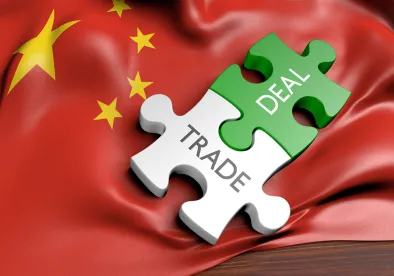On December 1, during a working dinner meeting in Buenos Aires following the G20 Summit, U.S. President Donald J. Trump and Chinese President Xi Jinping agreed to temporarily ease trade tensions as both sides continue negotiating over longer-term solutions to U.S. concerns about bilateral economic relations.
According to a White House press release, for a 90-day period, the U.S. will maintain the 10 percent tariffs on its list of $200 billion in Chinese imports, postponing an anticipated January 1, 2019, increase in duty levels. In September, the Trump Administration had imposed the 10 percent duties on imports from a wide range of sectors and announced that the tariffs would increase to 25 percent on January 1. The latest Trump-Xi agreement does not reduce or eliminate the current 10 percent duty, and the White House press release states that the increase to 25 percent “will” take place absent an agreement within the 90-day period. Nor does the latest announcement affect the 25 percent duties on separate lists of Chinese imports covering $34 billion and $16 billion in Chinese imports, respectively.
All three sets of tariffs have been imposed pursuant to the U.S. Administration’s determination in March under Section 301 of the Trade Act of 1974 (“Section 301”) that China’s technology transfer and intellectual property (“IP”) policies are harming U.S. companies. Notably, according to the White House, the negotiations that will take place in the coming 90 days will be broader in scope than IP policies, covering “forced technology transfer, intellectual property protection, non-tariff barriers, cyber intrusions and cyber theft, services and agriculture.” Chinese official statements to date have not referenced the 90-day deadline or the specific issues cited by the White House, instead emphasizing that the talks would be aimed at negotiating a removal of each side’s additional tariffs and suggesting that “reasonable U.S. concerns” could be gradually resolved as China undertakes a new round of economic reforms.
China agreed to purchase a “very substantial” amount of U.S. products across the agricultural, energy, and industrial sectors, with the agricultural purchases commencing “immediately.” In subsequent remarks, President Trump stated that China “will be getting rid of tariffs,” possibly referencing removal of some of China’s retaliatory tariffs to enable increased purchases of U.S. products. Additionally, in what the White House termed a “humanitarian gesture” in aid of the U.S. battle against opioid addiction, President Xi agreed to designate Fentanyl as a controlled substance, subjecting those exporting the drug to the U.S. to the “maximum penalty” under Chinese law.
The next 90 days could provide a welcome opportunity to address longstanding bilateral trade issues. However, resolution of the structural issues cited by the White House would be extremely challenging in such a short timeframe, which may introduce greater short-term uncertainty into the environment. As such, companies with interests in U.S.-China trade relations should take appropriate steps to try to shape outcomes of these negotiations and monitor developments affecting supply and market access. Meanwhile, affected companies should also consider submitting tariff exclusion requests for products on the $16 billion list, which are due by December 18, 2018.







 />i
/>i

